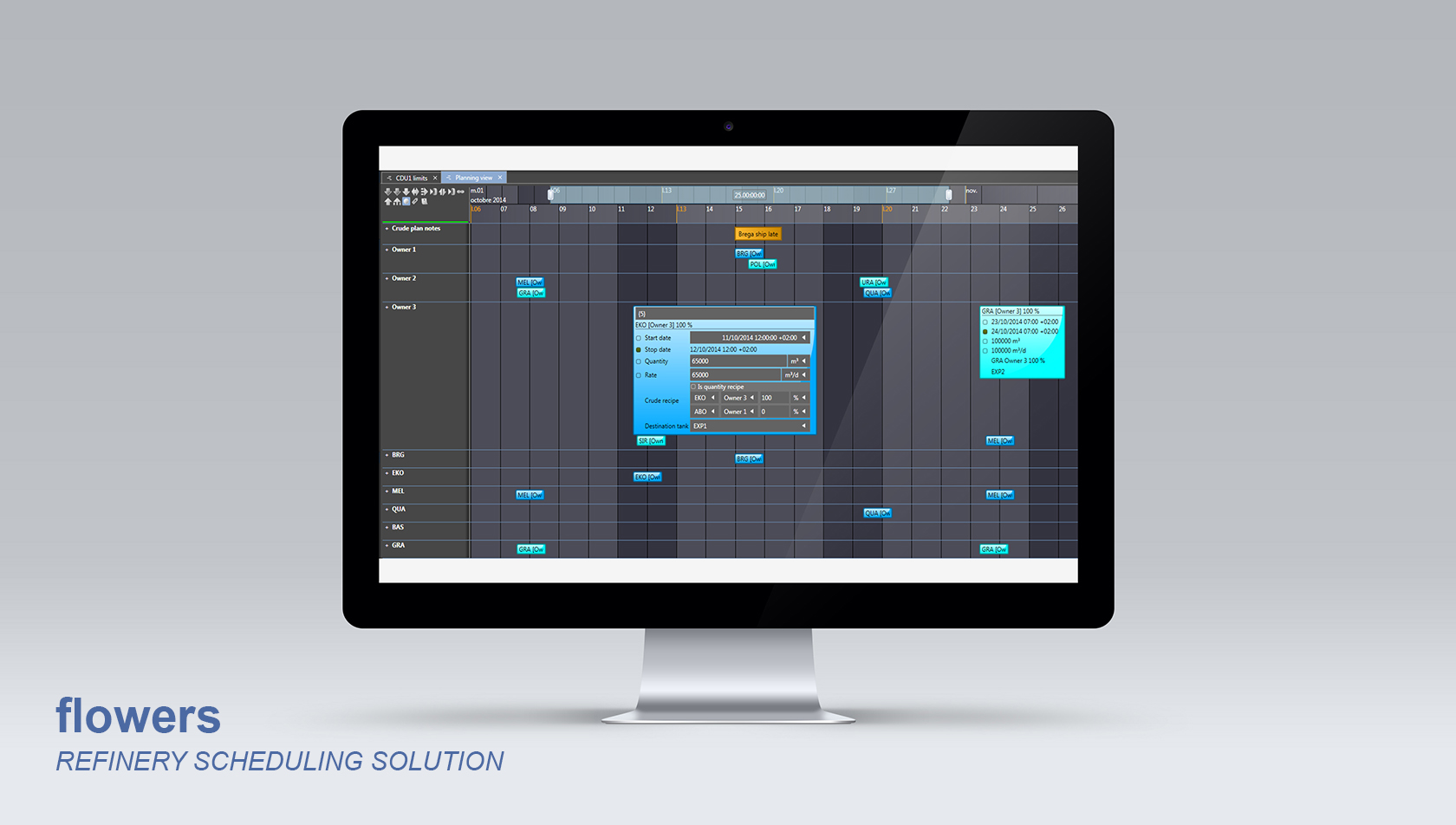
Players in refining and petrochemicals, have access to an innovative tool designed to streamline your scheduling operations
Refinery scheduling is at the heart of refinery operations management as it sits at the intersection between planning and immediate action.
The refining industry has always been a front-runner in the use of computer based decision support systems. Linear programming models are now widely used by oil refineries worldwide in order to determine the optimal crude slates and product grades over a period of time, which is typically one month. However, refinery planning models have a gross grain representation of time (often reduced to 1 period), and no representation at all of logistical constraints: even a multi-period model is not equipped to solve the problem of refinery scheduling. Therefore, one of the main difficulties encountered by refinery schedulers is how to put into action the optimal plan produced by the planning process.

The quest for an efficient refinery scheduling solution roughly started in the 1990’s with more or less ambitious attempts. In broad terms, 3 lines of research were followed:
- Flow simulation, trial and error approach: this is the most widely used approach for refinery scheduling, whether the simulation is performed through spreadsheet calculations
- Constraint Solving approaches (Mathematical or Constraint programming)
- Rule-based systems
Over the years, it became clear that none of these approaches was fully satisfactory: they were either too simplistic, making the refinery scheduling process a very tedious one, or too complex making the process too difficult to be conveniently used in practice, let alone maintained.
Our innovative approach to refinery scheduling can be summarised in the following formula:
Optimal cooperation between the refinery scheduler and a smart simulation engine
This means exploiting the synergy between the distinctive competence of the human scheduler, and the efficient, rigorous computing capabilities of the simulation engine.
Instead of putting the entire burden on the human scheduler (which is the case with a simplistic trial and error approach), or on the contrary, expect the brute force of computing power to solve the intricacies of refinery scheduling (which is the case in attempting overall refinery scheduling optimization), Princeps’ innovative approach is to intelligently distil and blend the best from Man, and from Machine.
What the refinery scheduler is best at… is what can be described as creative problem solving: if he has the tools that enable him to quickly explore and compare, he is able to push the quality of his schedule to a farther limit.
What a scheduling software should be best at…is efficiently running a large number of scenarios, and automatically solving some easy, but time consuming constraints.
Intelligent features to secure all stages of scheduling
Fast simulation
Full results recording
- Augmented simulation power with local constraint solving
- Threshold detection
- Relations propagation
Enabling schedulers's creative work
Exploring, comparing & archiving numerous scenarios
- Model & schedule versioning and synchronisation
- Multi-Schedules, multi-models and multiple-users support
- Advanced graphics
Optimisation
In limited but high added value areas
- Crude scheduling
- Blend scheduling
- Local optimisation (around a process unit…)